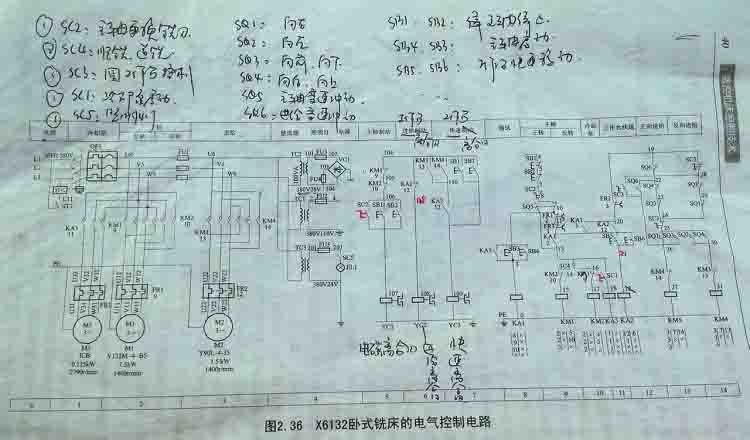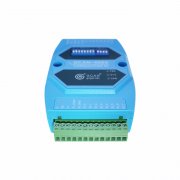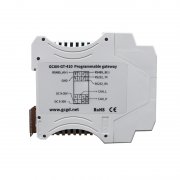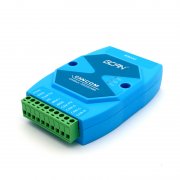9 Tips of using PLC part 2
I believe you must get some useful skills in using PLC in last news. Here we are going to continue introduce the tips of using PLC from the 5th tip.
5. anti-interference treatment tip of using PLC
The environment at the industrial site is harsh and there are many high and low frequency disturbances. These disturbances are typically introduced into the PLC via a cable connected to the field device. In addition to the grounding measures, in the design and construction of the cable, here's some tips of using PLC to avoid interference:
a. The analog signal belongs to small signal and is easily affected by external interference. Double-layer shielded cable should be used; high-speed pulse signal (such as pulse sensor, counting code disc, etc.) should use shielded cable to prevent external interference and prevent high-speed pulse signal interference to low-level signals;
b. The communication cable frequency between PLCs is relatively high. Generally, the cable provided by the manufacturer should be selected. In case of low requirements, the shielded twisted pair cable can be selected.
c. The tip of using PLC is analog signal line and the DC signal line cannot be routed in the same line slot as the AC signal line;
d. The shielded cable that is introduced into the control cabinet must be grounded and connected directly to the equipment without passing through the terminal;
e. The AC signal, DC signal and analog signal cannot share one cable, and the power cable should be laid separately from the signal cable;
f. In the field maintenance, the method to solve the interference is: use shielded cable for the disturbed line, re-lay; add anti-interference filter code in the program.
6. Mark input and output, easy to overhaul
The PLC controls a complex system and here's a tip of using PLC. What you can see is the two rows of staggered input and output relay terminals, the corresponding indicator lights and the PLC number, just like an integrated circuit with dozens of feet. Anyone who does not look at the schematic to troubleshoot the faulty device will be at a loss, and the speed of finding the fault will be particularly slow.
In view of this situation, this tip of using PLC is to draw a table according to the electrical schematic diagram, attached to the console or control cabinet of the equipment, indicating the electrical symbol corresponding to each PLC input and output terminal number, Chinese name, that is, similar integrated circuit tubes Description of the function of the foot.
7. Infer the fault through the program logic
The tip of using PLC to perform electrical fault analysis is reverse check method or the reverse push method, that is, according to the input/output correspondence table, the output relay corresponding to the PLC is found from the fault point, and the logical relationship satisfying the action is started. Experience has shown that when a problem is found, the fault can be basically eliminated, because there are not many fault points where the device has two or more simultaneous occurrences.
8. Fully and rational use of software and hardware resources
The tip of using PLC is that do not participate in the control loop or have been put in before the loop may not be connected to the PLC; when multiple commands control a task, they may be connected in parallel to the PLC and then connected to an input point;
9. Other tips of using PLC
a. Do not connect the AC power cord to the input terminal to avoid burning the PLC; the grounding terminal should be grounded independently and not connected in series with the grounding of other equipment. The cross-sectional area of the grounding wire is not less than 2mm2;
b. The auxiliary power supply is small, and can only drive low-power equipment (photoelectric sensors, etc.);
Hope these tips of using PLC can make it more easier for you to get touch with PLC. Want to know more PLC knowledge? Click: http://www1.gcanbox.com/fsd/gyzdh/
5. anti-interference treatment tip of using PLC
The environment at the industrial site is harsh and there are many high and low frequency disturbances. These disturbances are typically introduced into the PLC via a cable connected to the field device. In addition to the grounding measures, in the design and construction of the cable, here's some tips of using PLC to avoid interference:
a. The analog signal belongs to small signal and is easily affected by external interference. Double-layer shielded cable should be used; high-speed pulse signal (such as pulse sensor, counting code disc, etc.) should use shielded cable to prevent external interference and prevent high-speed pulse signal interference to low-level signals;
b. The communication cable frequency between PLCs is relatively high. Generally, the cable provided by the manufacturer should be selected. In case of low requirements, the shielded twisted pair cable can be selected.
c. The tip of using PLC is analog signal line and the DC signal line cannot be routed in the same line slot as the AC signal line;
d. The shielded cable that is introduced into the control cabinet must be grounded and connected directly to the equipment without passing through the terminal;
e. The AC signal, DC signal and analog signal cannot share one cable, and the power cable should be laid separately from the signal cable;
f. In the field maintenance, the method to solve the interference is: use shielded cable for the disturbed line, re-lay; add anti-interference filter code in the program.
6. Mark input and output, easy to overhaul
The PLC controls a complex system and here's a tip of using PLC. What you can see is the two rows of staggered input and output relay terminals, the corresponding indicator lights and the PLC number, just like an integrated circuit with dozens of feet. Anyone who does not look at the schematic to troubleshoot the faulty device will be at a loss, and the speed of finding the fault will be particularly slow.
In view of this situation, this tip of using PLC is to draw a table according to the electrical schematic diagram, attached to the console or control cabinet of the equipment, indicating the electrical symbol corresponding to each PLC input and output terminal number, Chinese name, that is, similar integrated circuit tubes Description of the function of the foot.
7. Infer the fault through the program logic
The tip of using PLC to perform electrical fault analysis is reverse check method or the reverse push method, that is, according to the input/output correspondence table, the output relay corresponding to the PLC is found from the fault point, and the logical relationship satisfying the action is started. Experience has shown that when a problem is found, the fault can be basically eliminated, because there are not many fault points where the device has two or more simultaneous occurrences.
8. Fully and rational use of software and hardware resources
The tip of using PLC is that do not participate in the control loop or have been put in before the loop may not be connected to the PLC; when multiple commands control a task, they may be connected in parallel to the PLC and then connected to an input point;
9. Other tips of using PLC
a. Do not connect the AC power cord to the input terminal to avoid burning the PLC; the grounding terminal should be grounded independently and not connected in series with the grounding of other equipment. The cross-sectional area of the grounding wire is not less than 2mm2;
b. The auxiliary power supply is small, and can only drive low-power equipment (photoelectric sensors, etc.);
Hope these tips of using PLC can make it more easier for you to get touch with PLC. Want to know more PLC knowledge? Click: http://www1.gcanbox.com/fsd/gyzdh/








